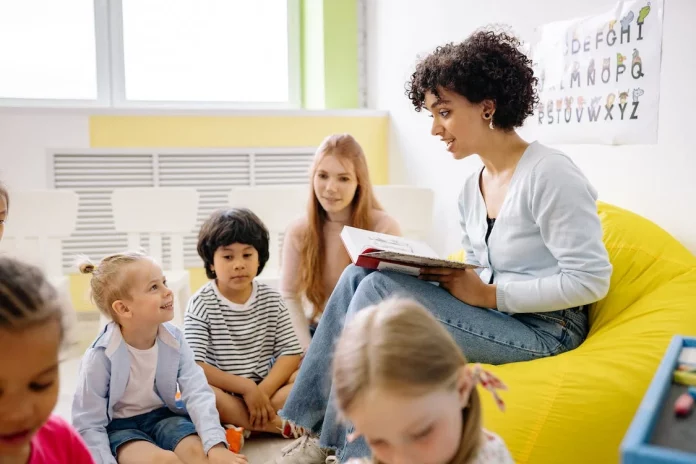Here are some strategies to help guide children behavior in a positive way and help develop a cooperative spirit in your child.
Strategies To Help Guide Your Child
Set Limits
Setting boundaries means sending a clear message about what your child can and cannot do.
When setting boundaries, it’s important to meet expectations. So if 8 pm is your bedtime, you should stick to it. For nights at 8:00 PM and ‘Anytime’, the child can claim ‘Anytime’ every night.
Offer A Choice
Children learn to make decisions and think for themselves when they have a choice. This is good for your child’s self-esteem and cooperation skills.
A good way to give children behavior choices is to offer them a limited range of choices, two is better.
You can give your child the opportunity to make choices every day, such as which toy to play with, read, dress up, eat snacks, play in the park, or work on a project.
How you give instructions has a big impact on whether your child will cooperate. You can make your instructions more effective in the following ways:
- get your child’s attention
- Give instructions, not requests.
- clarify what to do
- Make sure your child can do what you ask
- I will follow up on what you asked.
Using pictures may help your child. For example, use the image of washing hands when asking a child to wash their hands. It also helps to use clear and concise language with just a few words. Also, give the child time (10 seconds or so) to process the instructions.
This is a simple strategy to make a child’s behavior more likely to follow your instructions.
Step 1 Is To Give Instructions:
- Tell your child, “Josh, wash your hands.”
- Give your child 5 seconds to follow your instructions.
- If your child cooperates, give him enthusiastic praise and encouragement.
- If your child does not cooperate give Effective Instructions
- within 5 seconds of her, go to
Step 2 Is To Give The Order Again And Show The Child What To Do.
- Say “Josh, wash your hands” and point or walk to the sink.
- If your child cooperates within 5 seconds, give lots of praise.
- If the child does not cooperate within 5 seconds of her instructing and demonstrating, go to step 3.
Step 3 Is To Re-Direct And Use Physical Guidance.
- Use the handing guide to wash your child’s hands by saying, “Josh, wash your hands.”
- Do not stop teaching your child until you are done teaching. Note the following about the three-step prompts:
- Repeat the instructions at each prompt.
- Repeat steps 1 and 2 only once.
- Focus on your task. Don’t talk to your child about anything else.
Praise And Encourage Your Child When They Cooperate.
If you want Physical Guidance, don’t give praise or encouragement. Praise is an important part of encouraging good behavior. Descriptive compliments (when you tell them exactly what you like about your child’s behavior) work best. For example: “Well done Anna! You put away your toys.
Changing The Environment For Children And Young People With Autism To Work Together
You may be able to change the environment to make it easier for your children behavior to cooperate. Start thinking about situations where your child is consistently uncooperative. For example, your child may be uncooperative when you go out to eat, but at home, they are fine about eating.
This may be because your child is accustomed to certain routines at home or prefers to eat from a dedicated plate. Alternatively, your child may be uncooperative in crowded and noisy environments because he or she is more sensitive to noise than other children.
There may be things you can do to help your child feel more comfortable and thereby more cooperative:
Use child comfort objects in situations where your child is uncooperative. For example, when I go out to eat, I bring a special plate from home. Make a trade-off between what you need to do and your child’s sensitivity. For example, go to the mall during a quieter time of the day.
Interaction And Communication Support For Children And Adolescents With Autism
Children with autism are more likely to cooperate if they understand what needs to be done in certain social situations or if they have the ability to communicate in such situations.
Social Story
You can write to encourage appropriate skills and behaviors in situations that require your child behavior to cooperate, such as washing their hands, going grocery shopping, or tidying up. Social talk is especially useful for children who are anxious and want to know what is going to happen.
Use Technology
Technology can help children with speech disorders cooperate by facilitating communication. Photo Exchange Communication System “PECS” Uses images, symbols, words, or pictures to represent tasks, actions, or objects.

















